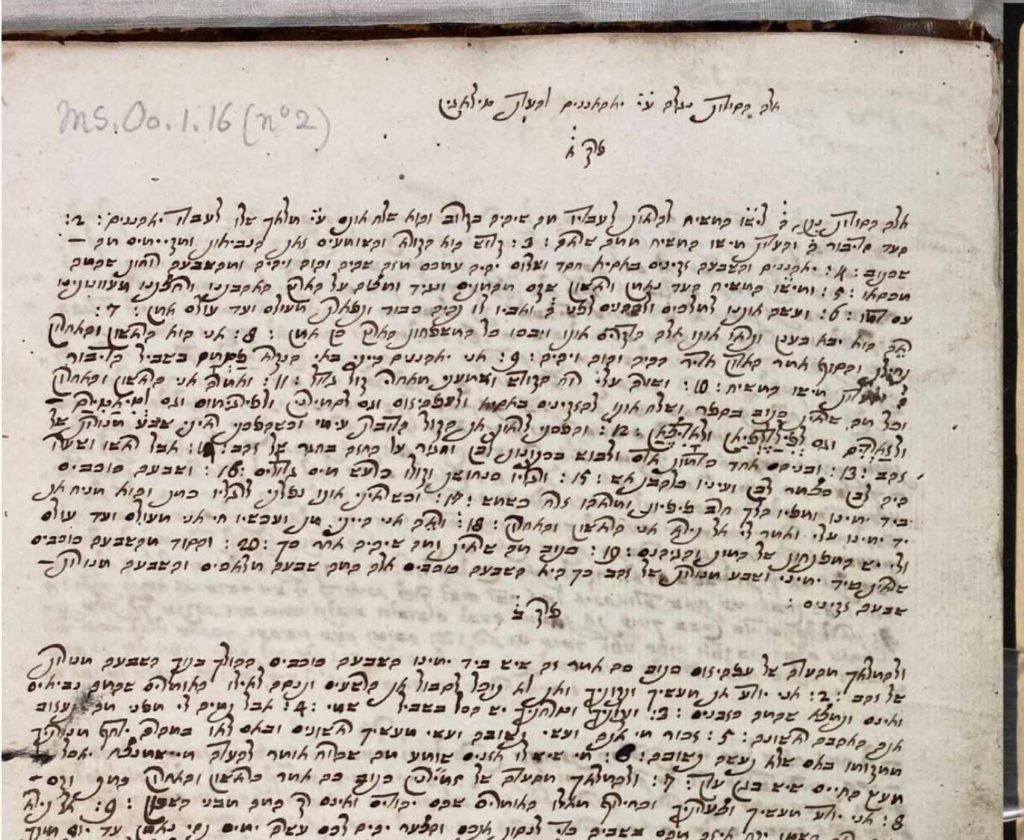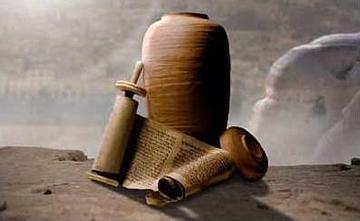
Cochin Revelation Cannot be the Original Hebrew of Revelation
By
James Scott Trimm
I have spent close to forty years searching for manuscripts of the original Hebrew of books of the “New Testament”. Recently claims Have surfaced claiming that the Cochin Hebrew version of Revelation (Cambridge Hebrew Ms. 00.1.16 and copied in John Ryland’s Gaster Ms 1616) is the original Hebrew of the Book of Revelation.
The same group has also claimed that the Cochin Gospels are the original Hebrew of the Gospels. In my blog two years ago The “Cochin” Hebrew Gospels – Hebrew Translation of the Peshitta I demonstrated that the Cochin Hebrew Gospels are nothing more than Hebrew translations of the Syriac Aramaic Peshitta text.
The Aramaic Peshitta text of the “New Testament” is only a 22 book canon, which lacks 2Peter, 2 & 3 John, Jude and Revelation. Some Syriac manuscripts and Bibles have augmented the Peshitta text with Syriac versions of these extra-Peshitta books. In the case of Revelation this is usually the Harkleian Syriac version or the Crawford Syriac version. So the Cochin Hebrew Revelation cannot be a translation of the non-existent Peshitta version.
I have taken some time and effort to examine the Cochin version of Revelation, and have come to the conclusion that it absolutely cannot be the original Hebrew of this very important book. I have found dozens of evidences for my conclusion, but here I will share five of the most compelling examples, that could be understood even by the layman.
Just one of the many evidences that the Cochin Hebrew manuscripts version of Revelation is not the original Hebrew is the reading of Rev. 2:1. Here the Cochin Text has מהעדה של עפהיזוס “from the assembly of Ephesus” where the Greek reading has the highly unusual reading τω εν Εφεσω εκκλησιας literally “the in Ephesus assembly” which is completely unacceptable Greek, and obviously too literally translated from the same Hebrew construction we see in the Hebrew of Daniel 8:2 were we read בשושן הבירה literally “in Shushan the citadel” so that the original Hebrew clearly read באפסוס הקהל not מהעדה של עפהיזוס
In another example in Rev. 2:22. Here we have another compelling evidence for the original Hebrew of the book, which we can clearly see behind the bad Greek translation. Here the Greek reads ιδου βαλλω αυτην εις κλινην “Behold I am casting her into a bed [and the one’s committing adultery with her]” The use of κλινην “bed” here seems strange indeed until we realize that the Greek translator has mistranslated one of two possible Hebrew words here (מטה or ערש) either of which can mean either “bed” or “bier”. Of course Jezebel would like nothing better than to be thrown into κλινην “bed” with her adulterers, but the clear meaning here is that she is being thrown onto her funeral bier along with her adulterers. This is a place where we can clearly see that the Greek is a bad translation of one of two possible Hebrew words, demonstrating that the Greek was a translation. But when we look at the Cochin Hebrew Revelation, we do not see either of these two possible underlying Hebrew words used, instead the difficult passage is simply omitted. However this passage that is difficult in the Greek was not a gloss in the Greek, it was obviously the result of mistranslation from the ambiguous Hebrew original. Instead the Cochin translator omitted the passage because it did not really make sense in his Greek source.
Revelation 2:27 is quoting Psalm 2:9. However the Greek translator of Rev. 2:27 (as does the Greek Septuagint translator of Psalm 2:9 misread תְּרֹעֵם (“shall break them”) as we see in the Masoretic Text of Psalm 2:9 with the wrong vowels as תִּרְעֵם “shall shepherd them” or in Greek ποιμανει then the Cochin Hebrew translates the Greek ποιμανει into Hebrew as ינהג אותם “shall lead them” when one need only look at the Hebrew of Psalm 2:9 to see the original reading is תְּרֹעֵם “shall break them” and that the Cochin Hebrew is a Hebrew translation of the Greek misreading of the original Hebrew. Even if we accept the Septuagint/Greek Rev. 2:27/Psalm 2:9 reading of תרעם as תִּרְעֵם “shall shepherd them” the reading of the original Hebrew would still not be ינהג אותם .
Furthermore in Rev. 12:10 we find the Hebrew word “Satan” (שטן) for “accuser” However the Greek has κατηγορος in the Alexandrian and Byzantine type texts and κατηγωρ in the Western type manuscripts. It has long been pointed out that κατηγωρ is a Greek transliteration of the Rabbinical Hebrew word קטיגור which certainly is the word which appeared here in the original Hebrew, not שטן.
Another very clear evidence is in Rev. 16:16 In this text, we are told in Cochin that the place of the gathering for the end times battle הנקרא בלשון עברי הרמגדן ” is called in the Hebrew tongue ‘Harmegidon'” The original Hebrew would have no need to explain that “Har Megiddon” is “in the Hebrew tongue”.
The Cochin Hebrew version of Revelation simply cannot be the original Hebrew of Revelation. I wish it were, but it simply cannot be. The original Hebrew may yet be discovered. It may be sitting in a clay jar somewhere waiting to be discovered. However the Cochin Hebrew is not the original Hebrew, it is a Hebrew translation of some Greek, Latin of Syriac version and ultimately owes its ultimate origin to our Greek Revelation.
In the mean time perhaps the original Hebrew can be restored by using the types of criteria presented above, to pull the curtain on the Greek, to peak at the original Hebrew behind it.

We must raise at least $880 by the end of the day tomorrow, or our account will plunge into the negative and start a chain reaction of returned items and fees. Plus we still need to pick up one of my wife’s medications which is just over $400 plus she has a procedure Tuesday and we don’t yet know what our copay is for that. We need your help now more than ever.
As I have said to you many times, I look on this work as a co-operative one with me, and all of you combining our resources together in order to get the job done of helping to teach this great truth to all in the world who will listen. Thank you so much from the bottom of my heart for your continued support, you are the ones who make it all possible by your contributions and your prayers for our work. I truly appreciate your help in every way.
If you can make a one time donation of $500 or $1,000 dollars to support this work.

